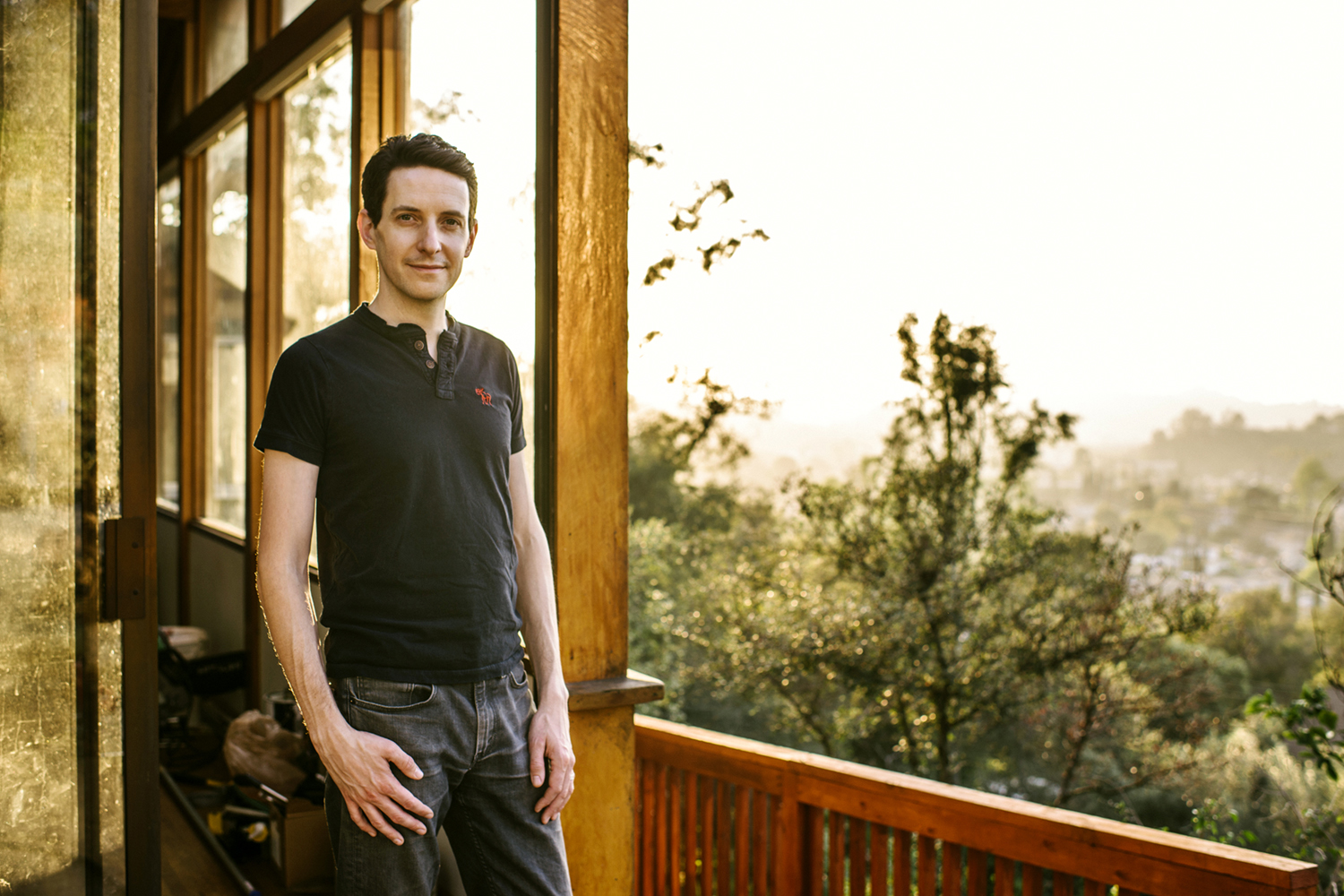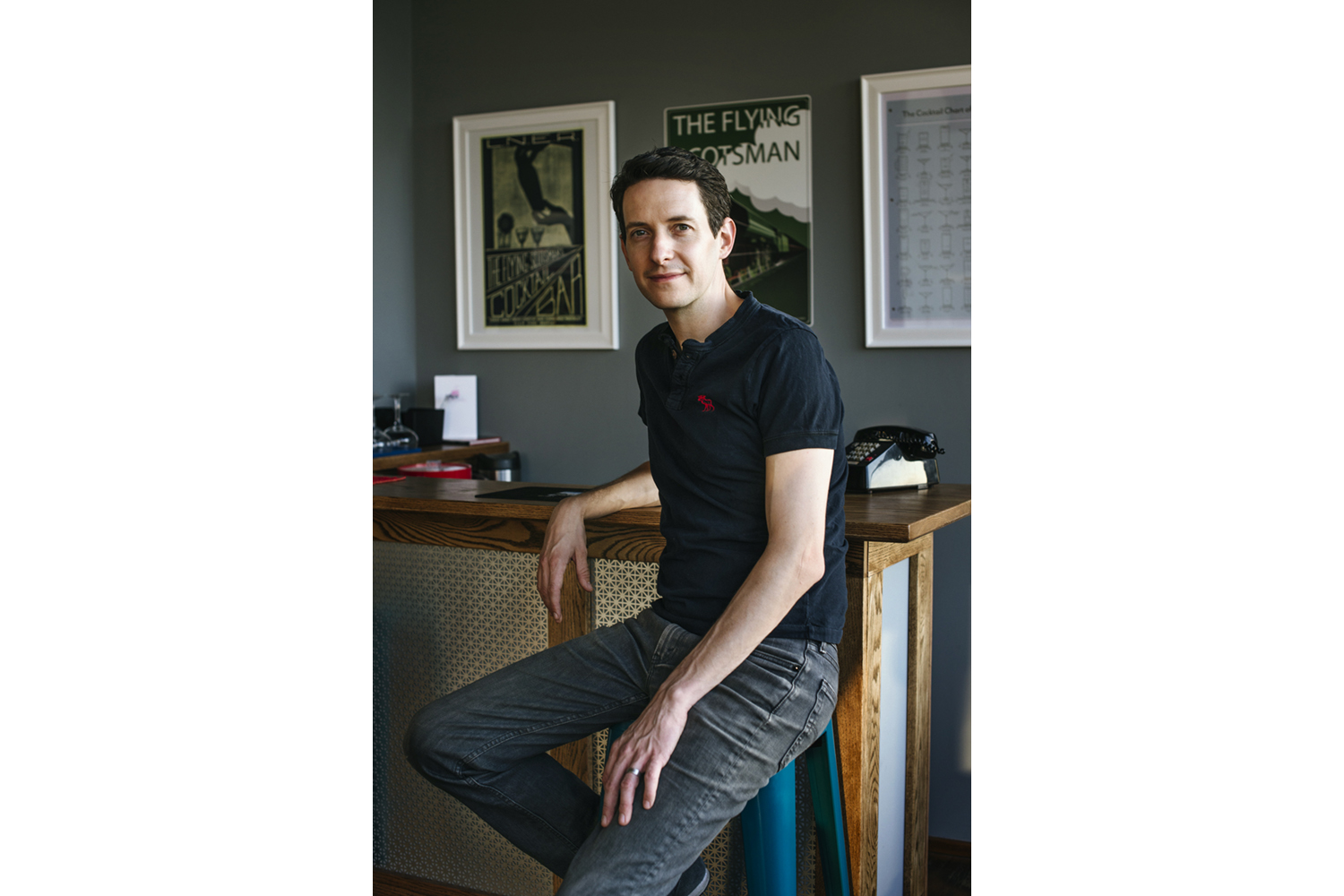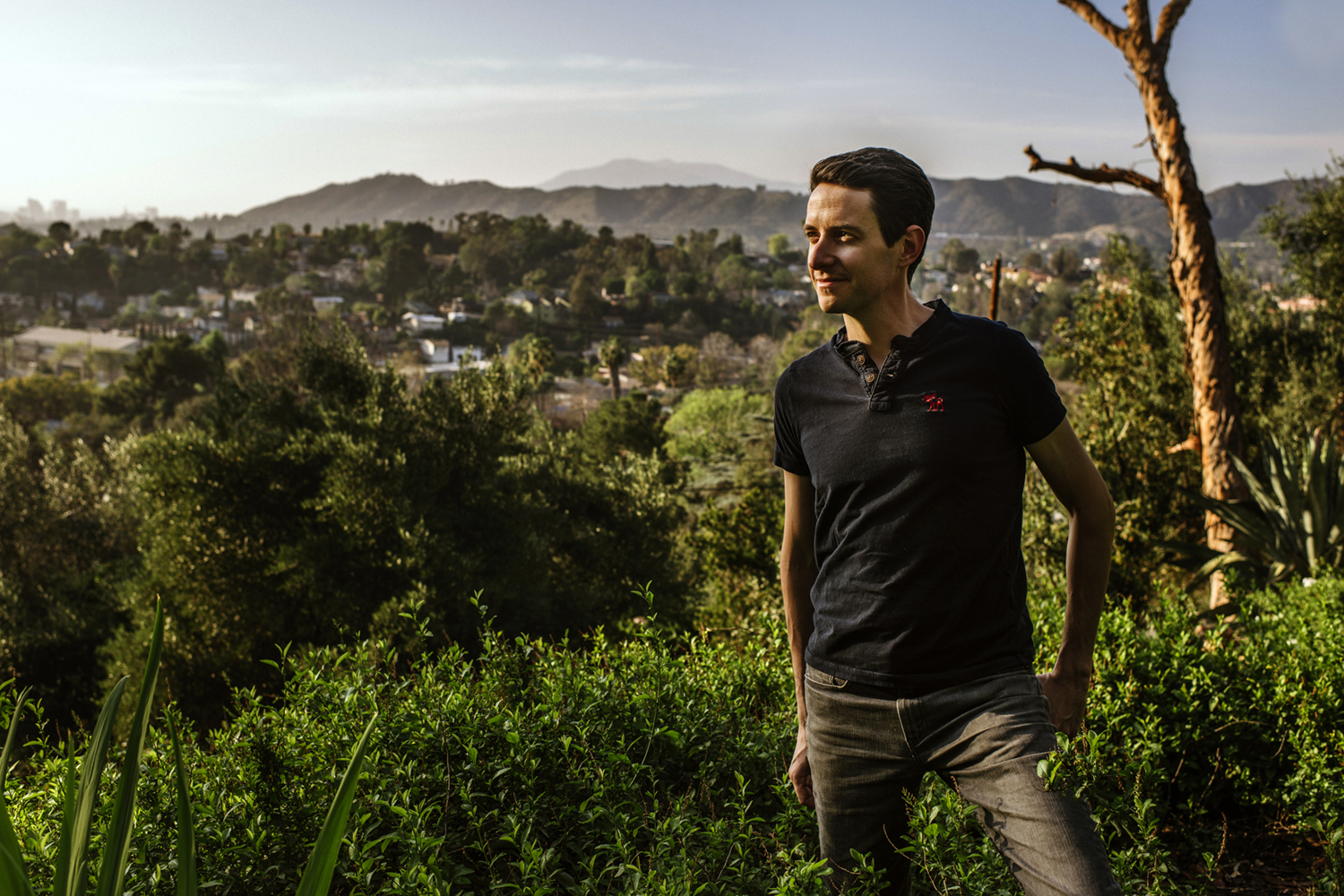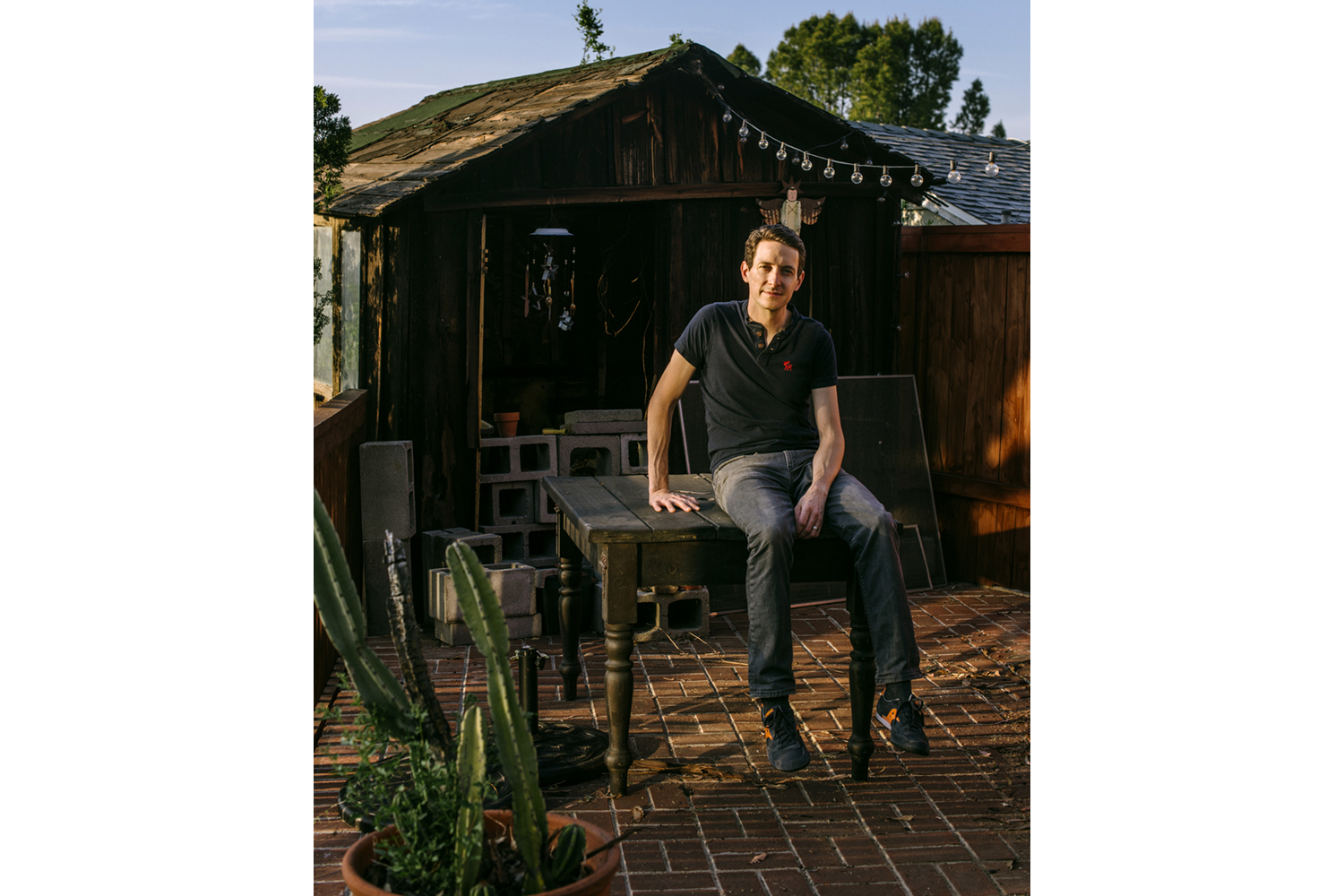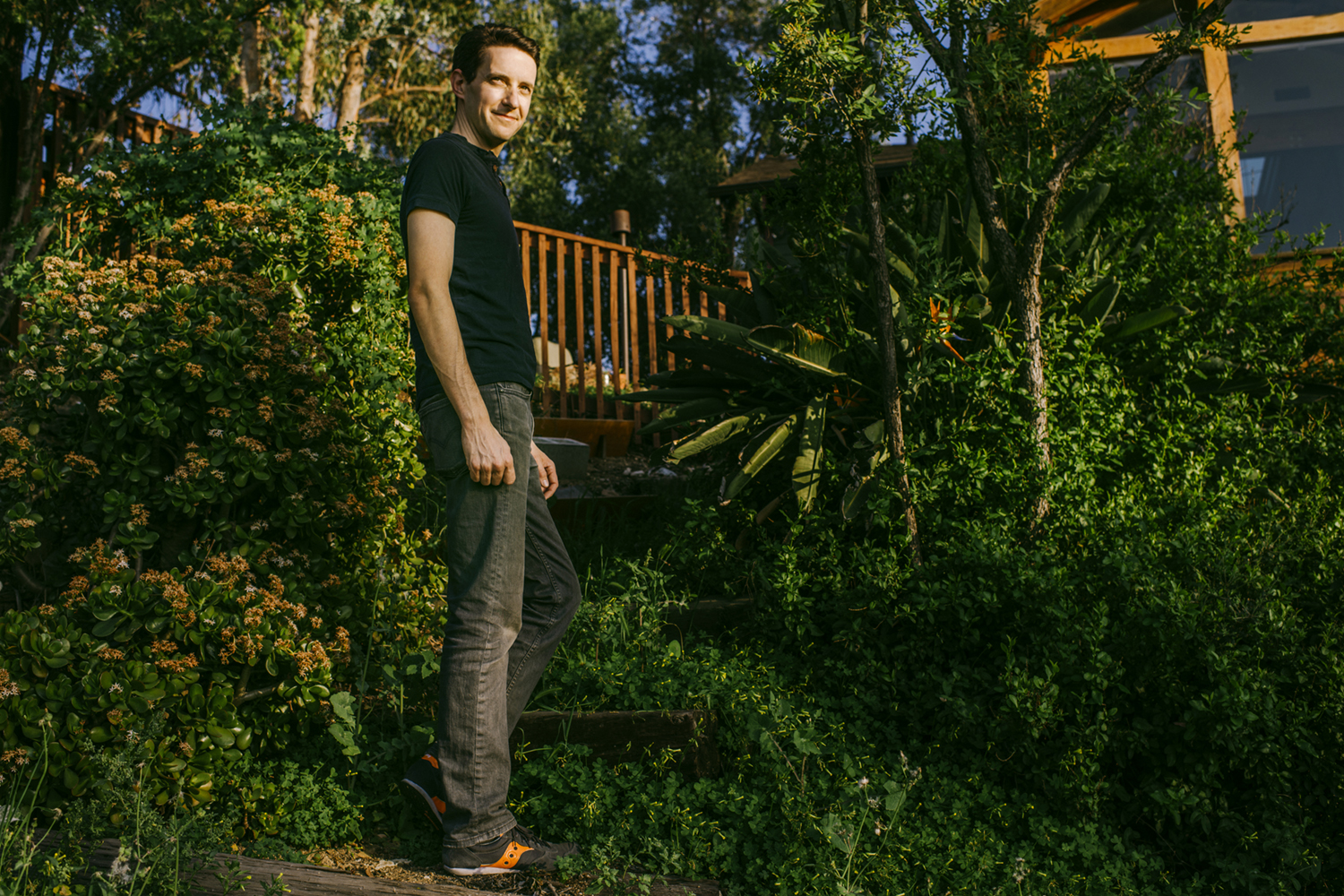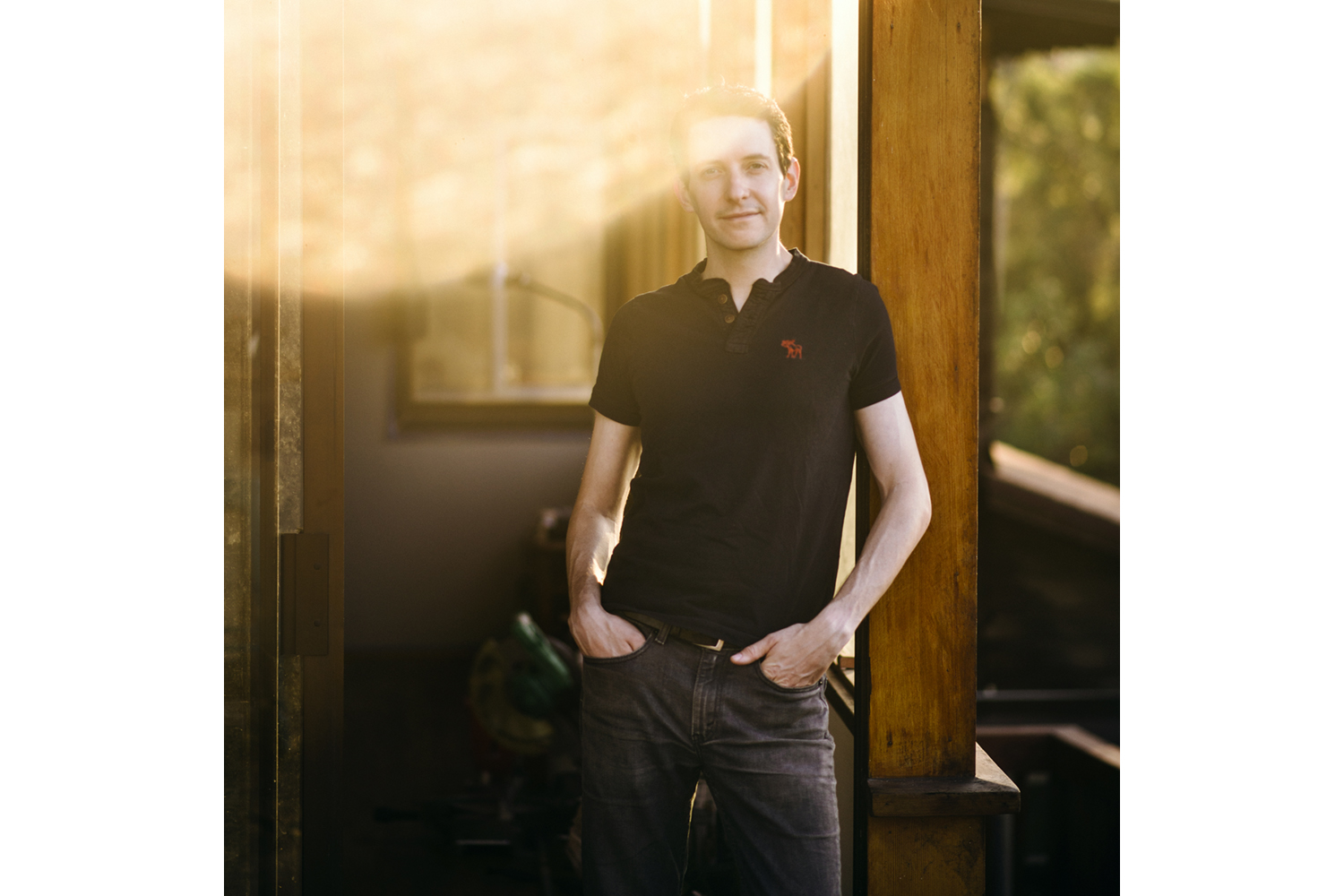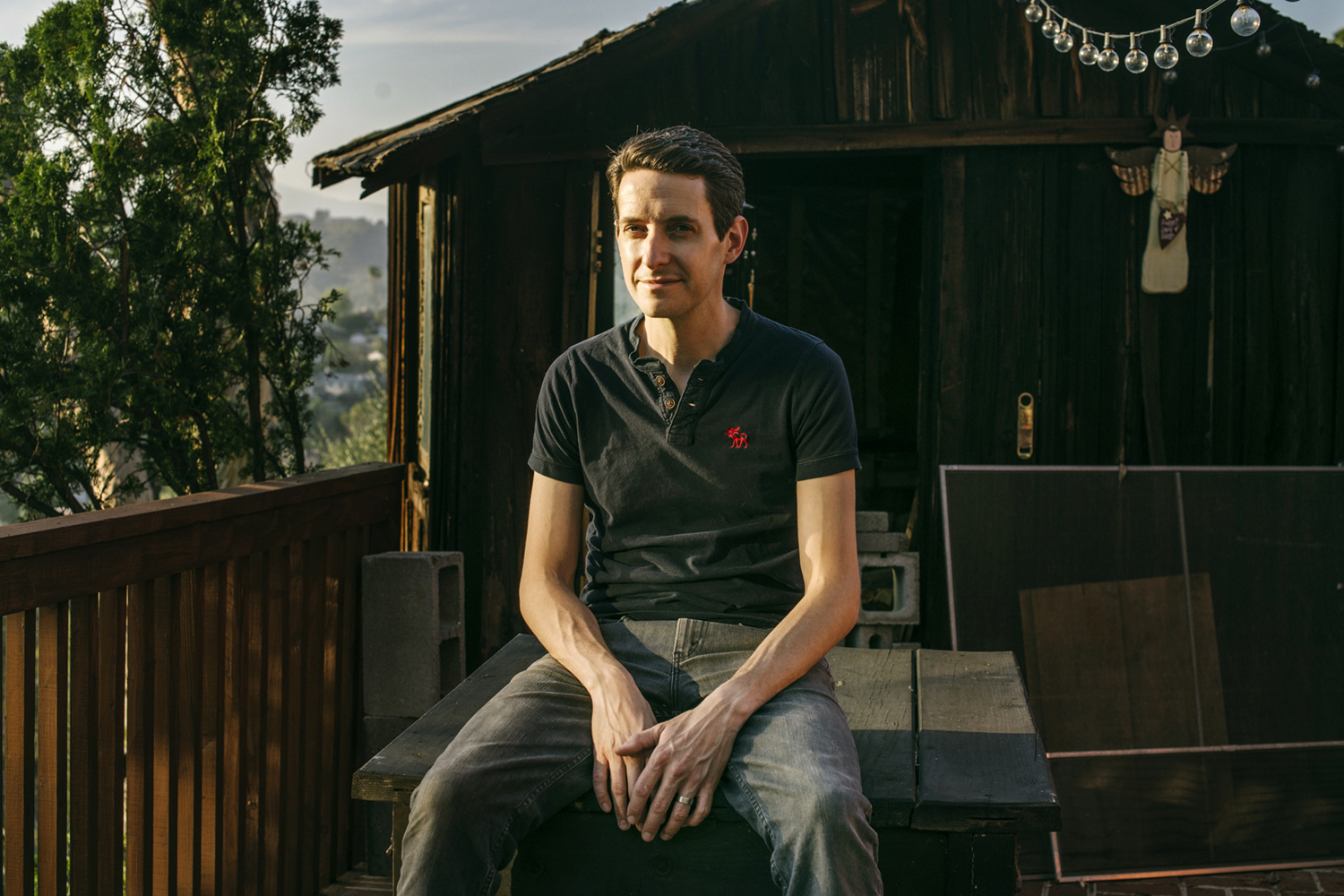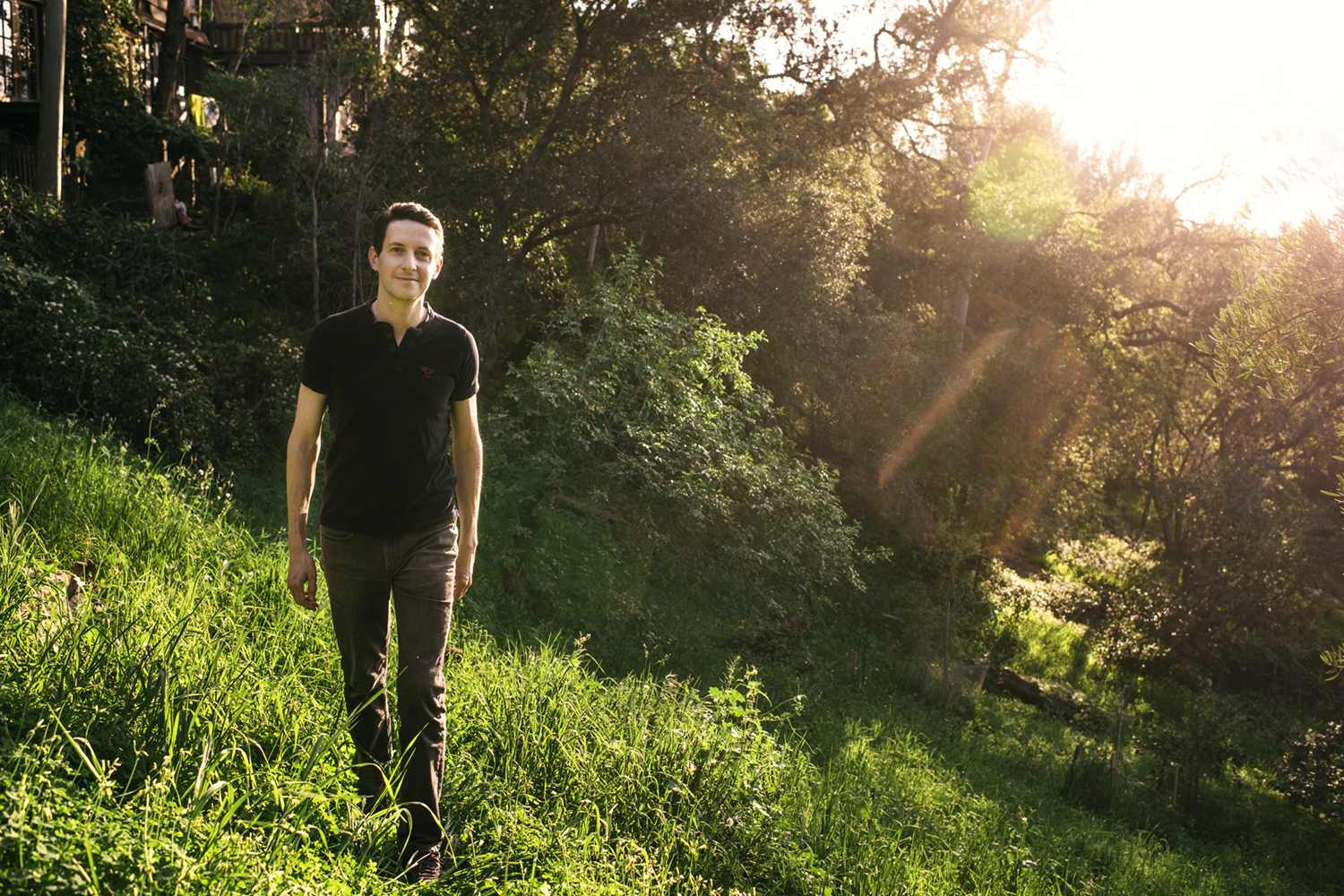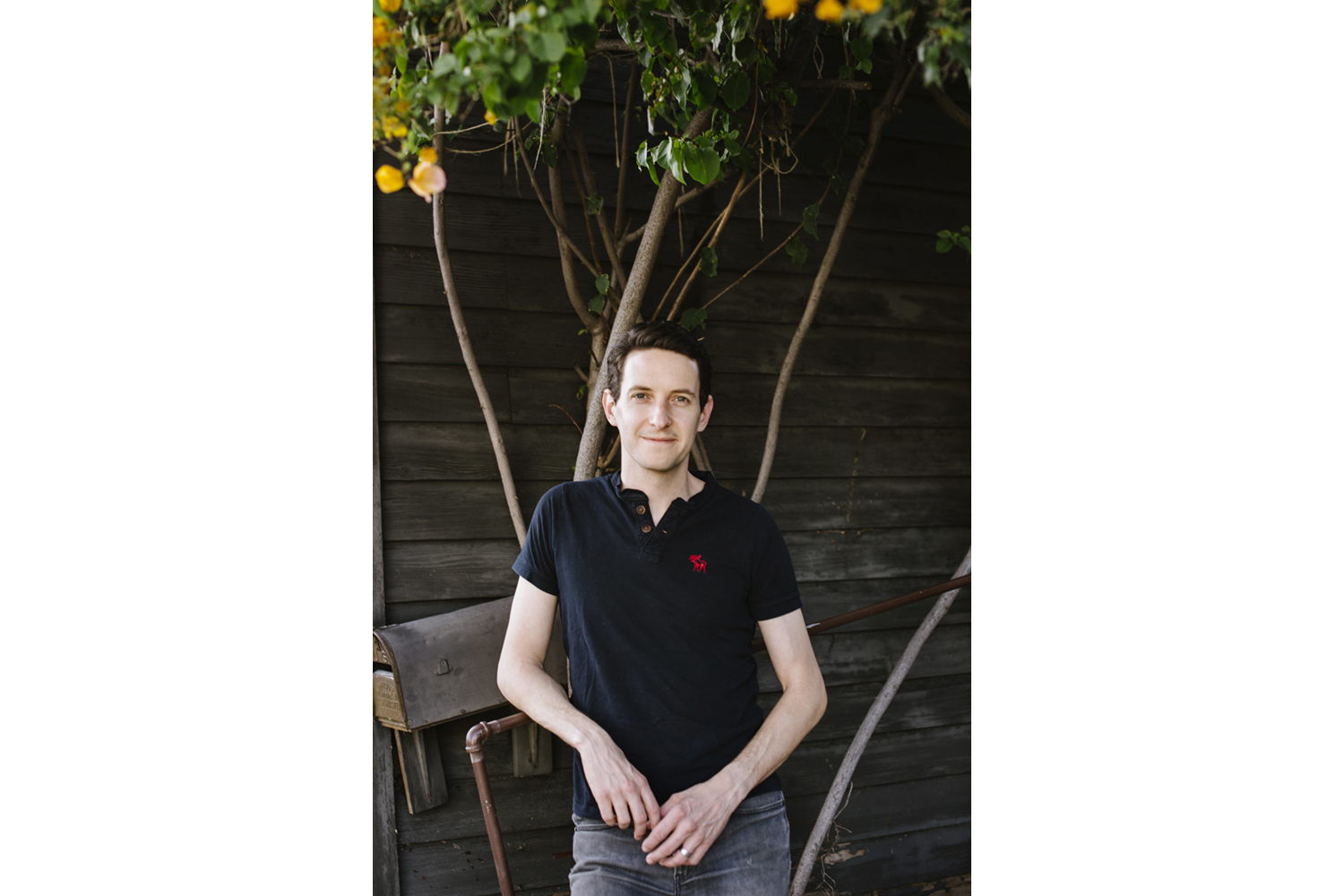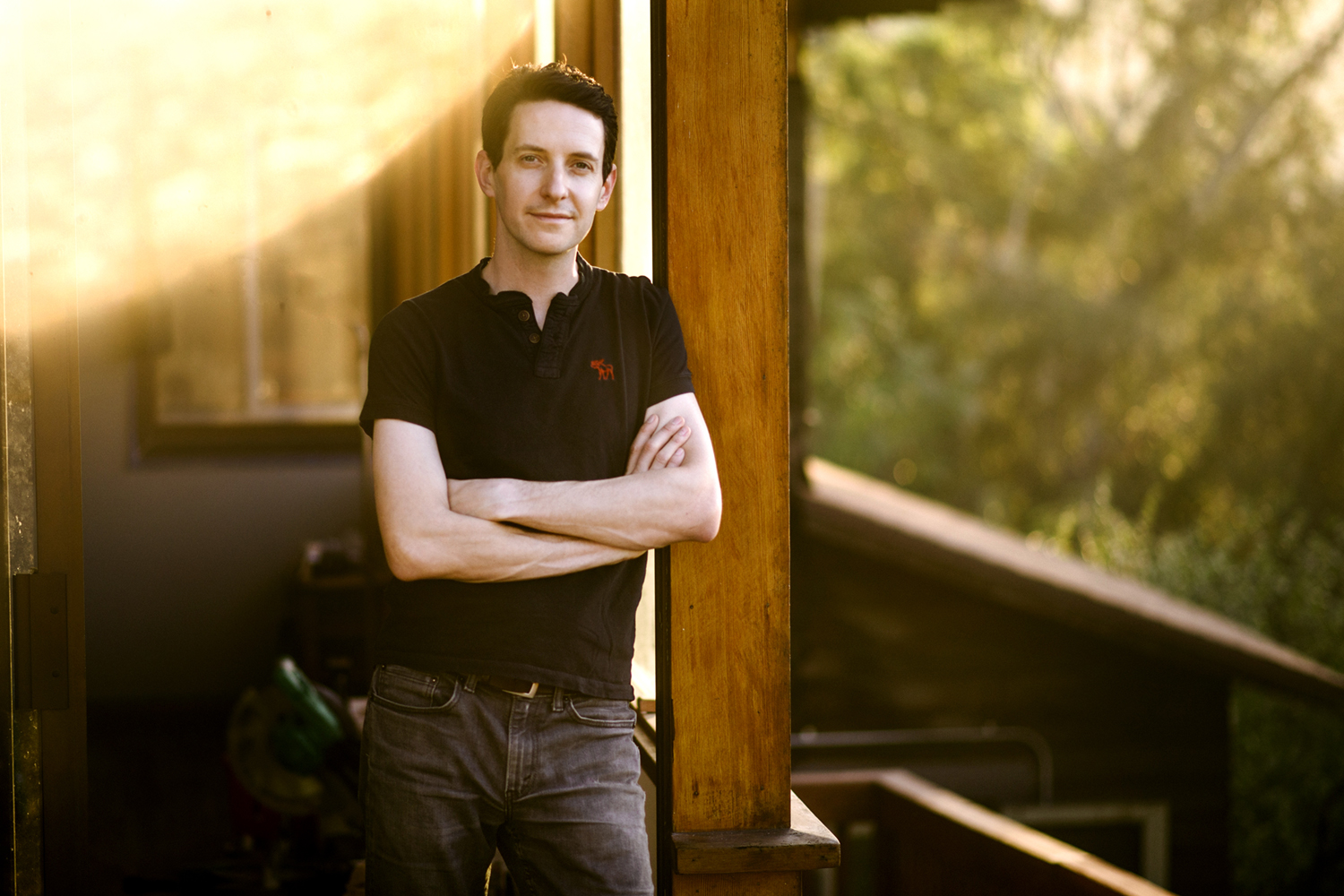LISTEN NOW:
SUMMARY:
LIGO** scientist, Alastair, shares his experience being a part of scientific history due to the recent detection of gravitational waves from two black holes colliding over one-billion years ago. This discovery confirms Einstein’s theory of general relativity and opens the door to new scientific discoveries about our universe.
Photography: Jonathan Hanson
Music: Eric Matyas
Additional Resources:
NY Times full gravitational waves article
**UPDATE: LIGO does it a second time: MIT
NOTES:
[4:15] Talks about first detection of gravitational waves
[5:20] Talks about growing up with science as a child
[6:05] Speaks about University and the beginning of his interest in gravitational waves
[6:45] Talks about enjoying research and physics
[9:30] Talks about how everything we have on earth comes from the stars and the universe
[11:00] Points out the excitement of this field of study
[12:10] Our understanding (or not) of black holes
[12:45] Talks about LIGO for first time
[14:30] Favorite parts of Alastair’s job
[15:30] Talks about the day of the detection of gravitational waves
[19:05] Talks about data analysis and being able to really look at what happened
[20:10] Sound bite of what 2 black holes spiraling into each other and colliding sound like
[22:20] Talks about concept of space and time being linked
[25:15] Significance of this discovery
[27:00] Talks about how we’re at a new frontier in science
[28:50] How this discovery changed things
READ THE TRANSCRIPT:
“By the time I came into my 9 am meeting there were a couple of people already saying, “something has happened, we don’t know what it is. There’s been some sort of event.” So, that was the point where I just sat in my office, on my own, looking at this and I thought, “Wow, if this really is proven to be a real event that hasn’t occurred for any strange reason, then this is so clear.” It was amazing.
“When we actually detected the event, I think one of the things that surprised me was that although I knew the sort of things that might be generating gravitational waves, the full story about the event is actually, really quite spectacular because it occurred, uh, 1.3 billion light years away. That means that this event happened 1.3 billion years ago. So, at the time that these black holes collided on earth, we were just starting to get multi-cellular organisms existing. So this predates the dinosaurs by a huge period of time.
“The way that life was on earth at the time was we were just starting to get clumps of algae growing in the oceans and the idea that now we’ve been able to detect that, 1.3 billion years later as this wave came through the universe, is kind of amazing to me.
“When I was growing up my dad was a scientist. He was a geologist, and so, certainly being around him it just seemed very natural doing research and doing things for myself. He was always building things, mending things around the house. He’s a very, very practical person and would always do things himself. I can remember when I was a kid being on holiday with him and rather than buying a kite he would build one out of, you know, sticks that we found in the yard, and sheets of plastic that were old trash bags, and that kind of spirit of doing things myself has really stuck. That’s just how I am about things. I always try to mend my own cars, and work on my own house and stuff, so growing up . . . that was certainly the environment I grew up in.
“And then when I was in university, in one of my final years I had to do a library project, and so I came across this gravitational wave project, and it turned out that not only was I interested in it, at the time when I did this library project, but there was also a branch of the gravitational research that was being done in Glasgow at Glasgow University, so it seemed like a natural thing to apply for, and it was a very exciting new kind of research that other people weren’t doing.
“I like the idea of going to do research because it’s something that you kind of, you do it on your own. You kind of make your own way in it. You decide what projects you’re interested in, and you learn the skills that you need yourself. So, it’s very much a kind of personal thing. It’s not like a regular job where you might have something that you’re trained for formally, and then you go and do it. Physics is much more of a kind of exploration, because you really have to do whatever it takes to get the experiment to work. That means learning a lot of new skills and trying to be open to new things.
“It was very exciting actually
finishing my undergraduate degree—where it was all the regular kind of examinations and regular teaching—and then suddenly coming into this environment where you’re really off experimenting on your own and doing your own stuff. And to be honest, everything I’ve done since then, being a PhD student and a post-doc in Glasgow, and then at MIT, and then Cal Tech, then being a laser engineer, it’s all very, very similar work. You know, it’s all just the same thing – trying to figure out how to do things and then going and getting them done.
“I think being involved in scientific work does really change your view point of life. First of all, you’re really driven by reason a lot of the time so you’re constantly trying to think things out, in a way. Which can actually be a bit difficult to deal with, you know, because a lot of time people don’t just deal with reason, they deal with feelings. I think it’s quite common for scientists to come across as cold and not very friendly, or as argumentative. And, you know, that kind of goes with the territory. It’s hard to switch that off when you’ve been at work all day and you come out of that environment.
“But then at the same time you understand a lot more about the universe that you live in. You don’t just look at the night sky and see stars, you look at the night sky and you see the universe. And that’s quite exciting. You look at the sun, and you understand the fusion processes that make the sun. You know that at the center of the sun, the sun is producing iron. You know that all of the metals that we have here on earth came out of the center of stars.
“That kind of changes your perspective on things when you pick something up and it’s made out of a heavy metal like gold or platinum or something. You know that came from the center of a neutron star, not just a regular star, but one of these dead stars, when it exploded spat out these heavy elements we have on earth, and I think a lot of people go through their daily life not realizing that we are made of stars and the things that we come across every day were created in these extraordinary events in the universe. So, it definitely gives you a different perspective on things.
“In our universe, five percent of it is matter that we actually know what it is. Things like what we have here on earth, or stars . . . gas, rocks, these sort of things. That only accounts for five percent of the universe. Ninty-five percent of it is made up of these two things called dark matter and dark energy. And we don’t know what those are.
“All of the other types of astronomy that we have at the moment involve light. X-rays and microwaves and ultra-violet, these are all just different parts of the light spectrum. We can’t see them, but they’re still on the spectrum. It’s still electromagnetic waves that are coming in, the same thing as light. This is the first time that we have done astronomy that doesn’t use light at all. We are directly measuring the gravitational effect from this distant source. And that’s very exciting because there are a lot of things that can stop light waves getting to us including the gravitational pull of a black hole.
“Black holes don’t emit electromagnetic radiation that we can detect, they just look black. And so the only evidence that we have of their existence is based on either the effect that the black hole has on nearby stars (we look at the motion of stars and we calculate that there’s a black hole there) or we might see gravitational lensing, and that’s basically the gravitational pull of the black hole being so strong that the star behind it has it’s light warped as it goes past the black hole. From our side it might look like a ring of light. So instead of a star looking like a single point, now it’s like a ring, because the black hole has bent the light as it passed.
“We don’t understand properly what is inside a black hole because the laws of quantum mechanics don’t work inside black holes, and so everything that we understand about matter, that we see here on earth, is not true inside a black hole. A black hole has gravity that is so strong that light can’t escape from it, and so any light that came off the surface gets bent back and sucked into the black hole again. Literally nothing escapes from the black hole.
“LIGO stands for Laser Interferometer Gravitational-Wave Observatory and the first part of that is Laser Interferometer, that’s what type of instrument it is, obviously. The gravitational-wave observatory part should be self explanatory: once we detect gravitational waves, we then become like an observatory that tries to do astrophysics to figure out what’s behind the gravitational waves we’ve seen. So LIGO itself is an L-shaped detector. Each arm of the L is about two and a half miles long, and when the gravitational wave comes through the detector, one arm gets compressed and the other one gets stretched, and it’s that relative change in length that we’re incredibly sensitive to. In fact, a gravitational wave coming through the detector changes the length of the arms by roughly one one-thousandth of the diameter of a proton, or one one-thousandth the diameter of a hydrogen atom. So it’s an unbelievably tiny effect.
“We have a massive team of people that are working on that and it really is an incredible thing to see when you go to the site, just how beautifully built everything is and how all of the electronics are made by professionals. And all the computers are maintained by professionals, and all this custom software that they run. Part of my job is taking the research that was done on certain parts of the interferometer and helping to do the engineering to install that at the sites.
“I think my favorite parts of my job are really the times that I get to use what I think are my personal skills, which is kind of building things and putting things together, and the parts of it that are a bit more like an art or a craft. One of the jobs that I did for LIGO was to produce the very, very thin glass fibers that are used to hold the mirrors in place. I was one of a group of people that designed and built the machine that produced these fibers. And actually going out to the site and running that machine is really kind of good fun, because it feels like something that I’ve been involved in since the beginning, something I’ve built. And there is a sort of art to producing them, it’s not just completely science and so that’s kind of enjoyable, going and doing that.
“Really, the day of the announcement was extraordinary because to see the press’ reaction and to see
. . . I was sitting at Cal Tech, at the press conference at Cal Tech, and watching the press conference that was being held in Washington D.C., and the moment that, the moment that the director of LIGO said, “We’ve done it, we’ve detected gravitational waves.” Immediately all of the headlines on all of the online papers started changing. And you could go to the BBC and it’s front page of the BBC. Front page of The Guardian. That was just completely mind-blowing to me, to see that reaction. It was just extraordinary.
“The actual event itself was caused by two black holes, and this is the first time that we’ve been directly able to see black holes. One of the black holes was about thirty-six times the size of our sun and the other one was about twenty-nine times the size of our sun. So these are really, really heavy objects but their physical size is much, much smaller. They’re about the size of the state of California. So they’re unbelievably dense, very, very compact objects. Over time, they’ve been sucking in more and more mass to get to the size that they are, and eventually, as they were coming towards each other in space, they got locked into each other’s gravitational pull; that caused this sort of spiraling where they started orbiting each other, and gradually getting closer and closer and closer to each other. And the part that LIGO was able to see, because of course this has been going on for a very, very long time as they got closer together, the part that LIGO saw was the last .2 seconds of their existence.
“By the time that they actually collided, they were circling each other seventy-five times a second. So if you can imagine two objects that are about thirty times heavier than our sun, cycling around each other at seventy-five times a second, before finally colliding into each other.
“At the point where they finally hit each other, they were moving at roughly half the speed of light. So, it’s a pretty extreme event and the gravitational waves that come out of that, there was so much energy in them that the final black hole that was created was actually three solar masses lighter than the two black holes that started out. So it lost the equivalent amount of energy of three times the mass of our sun. Just by E=mc2. Energy is the equivalent of mass. So when these things collided they, they lost three times the mass of our sun in energy, which is just a colossal amount, and at the point where it was emitting the largest amount of gravitational waves the energy output from this event was fifty times brighter than all of the stars in our entire universe put together. So, it was an absolutely huge event, when it happened.
“I think it took about a day, or maybe two days, for one of my colleagues at MIT to take the data and do some very, very simple processing on it that allowed us to look at what had happened; and that was the point where I knew it was real. A lot of our data analysis is done in an exceptionally complicated way which even for a scientist like myself is hard to understand, and so, when you get the results back from a complex data analysis, uh, for me, it’s very difficult to fully appreciate what has happened.
“What my colleague at MIT had done was a very, very basic thing. He just put a couple of filters on it, very similar to kind of, like, audio filters you might have on your hi-fi. You know, you can turn up the bass or the treble. Effectively what he’d done was turn down the treble and the bass so you were seeing this [gravitational wave signal] kind of mid-frequency, and the moment that you did that, in the data, you could see it. You know? You could see the signal from the two sites looked identical, and it had all of the classic features of what we were already looking for, for these binary black holes.
“The sound bite [from podcast]you just heard is the sound of two black holes spiraling around each other and then getting closer and closer and closer, and faster and faster. That’s why you hear this increase in the frequency. And at the very, very last second they collide, and that’s where you hear this kind of pop, right at the end. You can’t really hear it by ear, but after that there’s also a little, very tiny second of ringing as this black hole that’s been created kind of rings down and loses some energy. And those three individual sections, the part where it spirals and the frequency increases, the part where you hear the pop, and the part where you hear the ringing . . . they all tell us something about what happened.
“The part where the two black holes are spiraling around each other allows us to actually calculate what the mass of the black holes is because we can work that out from the frequency of how fast they’re going around each other. The part where you hear the pop, where they collide with each other, that actually allows us to work out the distance to this event. That’s how we know that it happened 1.3 billion light years away. We know from how big that pop was exactly how far away they are. And the final part, where they ring down, that tells us a lot about the black hole that was formed: we can work out how large it was and that’s how we know that it’s actually three solar masses, less than the two black holes that began this whole thing.
“So, Einstein was the first person to come up with this concept that space and time are linked and that gravity is actually caused by space time being warped by large bodies, large masses, actually deforming the fabric of space itself.
“So, space and time are not two completely separate things. And that’s a bit difficult to think about, because as humans, in our daily lives, we experience them as being very separate. We move through three-dimensional space, and time is this sort of linearly occurring thing, so to actually think that space and time are inextricably linked into this thing that Einstein called spacetime, is very difficult for humans to really conceptualize.
“The gravitational waves themselves were created from the black hole; they were created from mass that was previously a black hole and has now come past the earth and warped our space time on earth, and we’ve been able to measure that.
“The easiest way to think about it, really, is if you imagine a trampoline with a bowling ball sitting on it, and then if you think about rolling marbles past that bowling ball, the surface of the trampoline itself has been warped and the marbles that you throw past they’re not being attracted in towards that bowling ball because of the gravitational pull of the bowling ball . . . they’re moving around it, because the actual surface of the trampoline itself has been warped.
“Einstein’s view of gravity was essentially that large objects like stars, like our sun, were warping spacetime around them, and the planets that are in orbit near them are just actually moving through the space in the straightest line that they see.
“You can imagine that if you had two bowling balls, and you caused them to roll around each other in the middle of that trampoline, you might get some little kind of ripples traveling out across the surface, and that’s basically how Einstein envisaged gravitational waves. So, it’s like if you imagine standing at the edge of a pond and throwing a stone into the pond, you would create ripples and they would move outwards, kind of like concentric circles. But to somebody who’s standing on the other side of the lake, they would just see these kind of straight lines kind of coming in towards them. They might wonder what it was that had caused these ripples that are coming toward them, and that’s really what it’s like for us on earth trying to detect gravitational waves; because we see these coming in, and then we have to try to work out what caused them, and where they occurred.
This discovery is so significant, for a number of reasons, really. The first one is that Einstein predicted gravitational waves, and in his lifetime he never believed that we would be able to detect them. For us to be able to confirm another part of general relativity is really quite exciting.
“When you see two black holes that are so massive moving around each other so fast, the relativistic effects that you’re seeing there are extremely strong. Really, really strong. And it’s like nothing we’ve ever seen before. The emission of gravitational waves from black holes was a theory that has now been proven. And also, black holes themselves were only ever indirectly observed. This is the first time we’ve seen a real signal from a black hole.
“I think one of the things that I constantly think about is how we’re really, now, at a new frontier in science and technology. I mean, the world has never been like this before. If you go back a hundred years, science was unbelievably crude. A hundred years ago is the point where Einstein had just come up with general relativity, and if you go any further beyond that, you really are at a time when we didn’t have computers, we were only just building the big telescopes that we have now to look at the universe . . . and so the way that science and technology has
developed in the last hundred years has just completely changed our understanding of the universe.
“One of the reasons Einstein didn’t believe we would detect gravitational waves is that in his lifetime, he didn’t know about black holes. And the fact that now people you talk to in the street understand that black holes exist, that’s a real triumph for science because it’s not just people in ivory towers learning about this, you know? The public are funding this research, and it’s really important for the work that is done to be communicated effectively to the public. It’s a responsibility for scientists to have, and so it’s really exciting to see the media reaction when we had this recent detection, and to see media correspondents really going out of their way to try to describe this as carefully as they could, and as as accurately as they could, that was really very exciting.
“I think it changed things in ways I wasn’t expecting, so first of all I was really pleased for my parents, you know, because they put me through university, and they supported me the whole way through my education. All the way through my PhD, they supported me. I was just really pleased for them that something had come out of it. And to have friends of theirs phone them up and say that they’d seen me in the paper was really exciting as well. From a personal point of view I’ve heard from a lot of people that I hadn’t been in touch with for a long time and people I went to high school with, and that was really nice as well, to know that they’d kind of seen that I am doing this and that I was involved with it, and wanted to congratulate me. So that was exciting. Yeah.
“This is really kind of closing the lid on all of the general relativity predictions. And it’s such a funny thing, it’s really surreal, because you know it’s like a completely once in a lifetime thing, like, you kind of realize, wow, this is never going to happen again.
“To be here, in that .2 of a second where we detected it was like, that was our one chance. That’s gone now. You know? That’ll never happen again, so strange.” •
